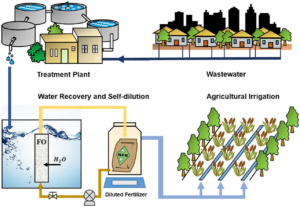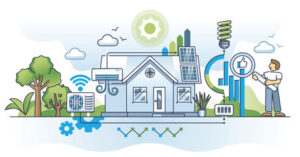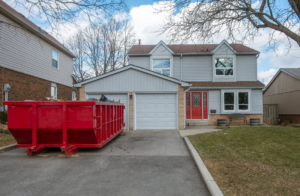Storing your boat in the water for long periods can damage the bottom and hull. Look for a durable lift made of corrosion-resistant materials such as aluminum or stainless steel.

The right lift can add value to your property and save you time with easier launch and dry docking. Consider factors such as the type of lake, boat size, and dock width when choosing a lift.
While many types of lifts exist, hydraulic lifts are the best for heavy lifting. Powered by Pascal’s Principle, they are able to transfer enormous amounts of force with a minimal amount of effort from the operator. The gist of the principle is that a small amount of trapped fluid can generate massive amounts of pressure, enough to lift an object much heavier than itself.
This equipment is used in a variety of work environments and vehicles for lifting people and things up to heights where they are more easily accessible. They are also useful in places where it would be unsafe to walk or climb, such as in a high-rise building.
The most common type of hydraulic lift is a platform or scissor lift. These are designed with a flat rectangular or square platform on which the load rests. They can be either manual or electric to allow the load to be raised and lowered with the push of a button. There are several variations of these, ranging in height and platform size to accommodate different types of loads.
Hydraulic dock loading lifts are another type of hydraulic lift that is often seen in warehouses or shipyards. They are a safe, efficient, and convenient way to load truck beds from the ground level without having to use ladders or scaffolding. They can be permanently installed on the dock or portable for greater flexibility.
There are many other types of hydraulic lifts for various applications, such as small portable hydraulic lifts that can be used as a mobile work table or a tool carrier. These are able to lift and position items for inspection, shipping, or repair. Many industries rely on them for positioning equipment and workers at an ergonomically appropriate height to prevent back problems or injuries.
Hydraulic lifts are powered by a piston that slides inside of a fixed cylinder filled with hydraulic fluid. The fluid is pumped through the system and is held in the reservoir at one end of the cylinder. When the piston is activated, the fluid is forced out of the reservoir and moves upwards through a series of tubes. This pushes the platform that is attached to the ram and raises it.
Hydraulic Technology
If you’re a boat owner, there are many benefits to investing in a lift. A lift allows you to keep your boat suspended above water level when not in use, protecting it from the elements that can damage it. For example, waves can cause sand, dirt and other debris to fall inside the boat and deteriorate materials over time. Additionally, the oils, paints and other cleaners used on boats can spill into the water, contaminating it. With a lift, these chemicals are kept away from the water and environment, reducing their impact on the surrounding ecosystem.
There are several types of lifts available, each with its own advantages depending on your situation. One type of lift that’s popular among boaters is the cantilever lift. These are typically easy to operate and offer a variety of sizes and cradle shapes to fit different boat makes and models. They’re also ideal for shallow waters.
Another type of lift is the vertical hydraulic lift. These are a bit more expensive than cantilever lifts but offer a number of additional features that make them worth the extra cost. One of the biggest advantages is that they can be operated at full capacity, allowing for a greater boat weight range to be lifted. They’re also more durable and have a long lifespan due to the high-quality construction.
Other features that can be found on vertical hydraulic lifts are adjustable width bunks to allow you to fine-tune the distance between each leg, a stepped channel design to minimize shear loads on the weld and cable rollers for better cable winding. This allows you to adjust cable lengths and eliminates shear loads on the weld when lifting the boat.
For more demanding locations, like those that experience rougher weather conditions, you may want to consider a 4-post conventional lift. These are perfect for a wide range of boats and can handle heavy wakeboard and wakesurf boats, larger pontoons and runabouts. They’re also able to stand up to rough weather conditions like rain, wind and waves without the need for pilings.
Fastest Lifts
If you want to get your boat in and out of the water quicker, then a hydraulic lift is definitely the way to go. They’re designed to be the fastest lifts on the market and can raise a boat up and down in less than a minute.
You’ll also find that a hydraulic lift is better able to withstand the elements. This is important if you live in an area that experiences strong winds and waves.
Another benefit of a lift is that it allows you to save time and money. It eliminates the need to hitch up your boat and haul it to the shore to be stored for the winter. Plus, it can also cut down on the amount of gas you’ll use driving back and forth to your boat ramp.
When it comes to finding a fast lift, there are many different options available. Some are simple, while others are more complex. For example, a cantilever lift is much simpler (one cable on 2 pulleys) but doesn’t work in deeper water. On the other hand, a vertical lift uses cables that run through the frame and is capable of raising your boat to a higher level in deeper water.
Choosing the right lift for your needs is important, so it’s a good idea to consult with local experts before making a decision. They can advise you on the best lift for your home and give you a list of available features. For example, if you have a pontoon boat, then it’s recommended that you consider getting a powerful lift with a durable frame to accommodate the weight of your watercraft.
The most important thing to remember when shopping for a boat lift is that it should be durable and reliable. A lift that’s built to last will give you peace of mind and make it easier for you to enjoy your boating activities for years to come. You’ll want to choose a company that offers a warranty and uses high-quality components. Some manufacturers even offer a lifetime warranty on certain types of lifts.
Safety First
As with any piece of equipment, it is important to follow all instructions when using a boat lift. This includes everything from installing the lift properly, to following proper maintenance guidelines. Following these guidelines can prevent damage and increase the life cycle of your lift. It also helps to ensure that you are not overworking the system, which could cause it to break down.
When operating your lift, make sure that you are aware of everything around you at all times, including other boats and objects. It is also important to pay close attention when maneuvering the boat into the lift, as there are many things that can go wrong during this process. Whether you are in a marina or on your own dock, this is a very important step that should be completed with great care and patience.
Another critical aspect of boat lift safety is understanding how much your lift can handle. Each lift is rated to hold a specific amount of weight, and exceeding this limit can cause damage. This is because the lift is not able to distribute the weight evenly, which can lead to overworking the system and breaking cables.
To avoid this problem, always be sure to weigh your boat before deciding how much lift capacity you need. Also be sure to account for any additional weight from fuel, equipment and batteries. This will help you select a lift that is capable of safely carrying your boat in and out of the water.
When operating your lift, make sure that you never operate it with people in the boat. This is extremely dangerous and can lead to fatal injuries. Additionally, it is a good idea to leave the boat lifted when you are not in it to protect it from damage from marine life and weather conditions.








